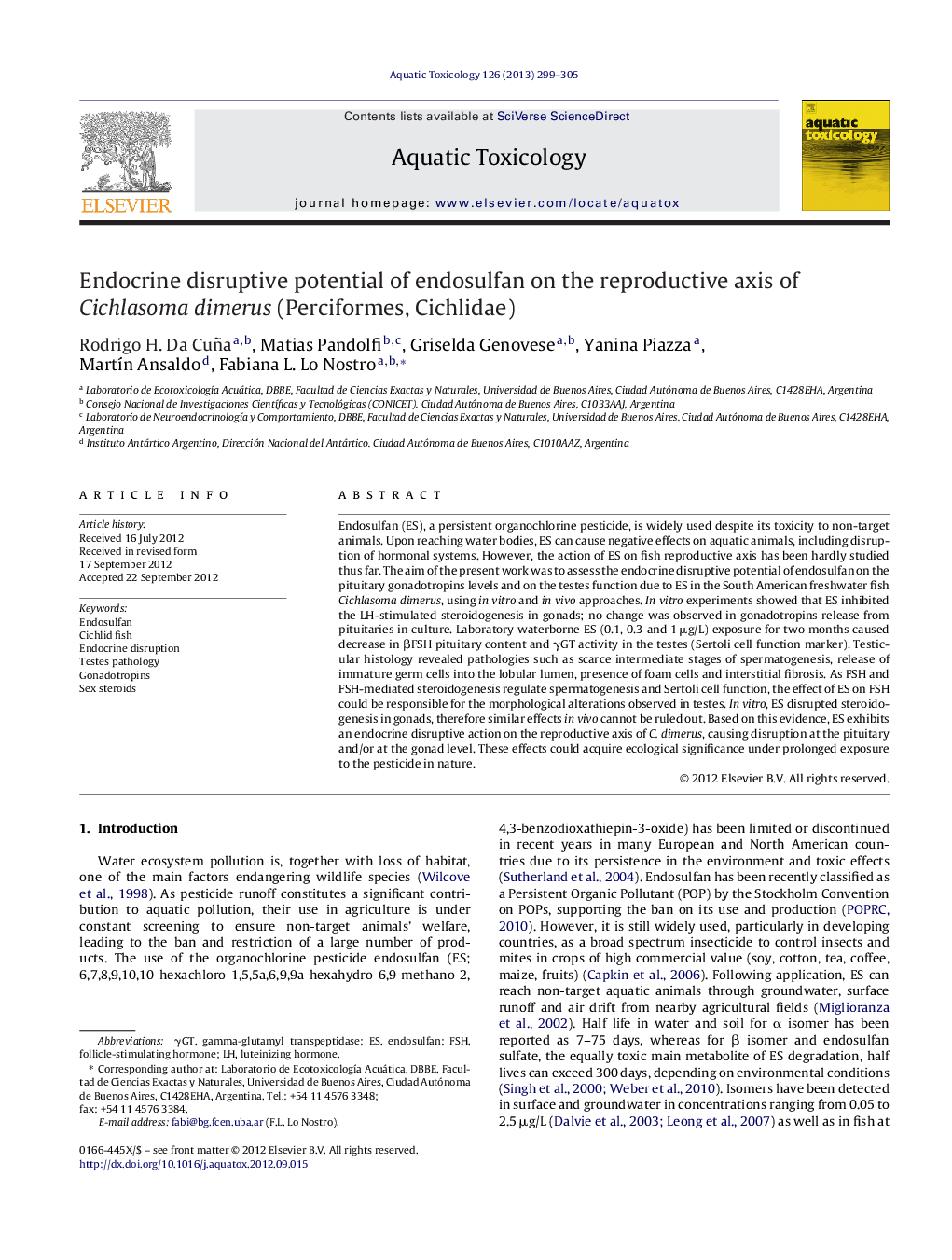| Article ID | Journal | Published Year | Pages | File Type |
|---|---|---|---|---|
| 4529613 | Aquatic Toxicology | 2013 | 7 Pages |
Endosulfan (ES), a persistent organochlorine pesticide, is widely used despite its toxicity to non-target animals. Upon reaching water bodies, ES can cause negative effects on aquatic animals, including disruption of hormonal systems. However, the action of ES on fish reproductive axis has been hardly studied thus far. The aim of the present work was to assess the endocrine disruptive potential of endosulfan on the pituitary gonadotropins levels and on the testes function due to ES in the South American freshwater fish Cichlasoma dimerus, using in vitro and in vivo approaches. In vitro experiments showed that ES inhibited the LH-stimulated steroidogenesis in gonads; no change was observed in gonadotropins release from pituitaries in culture. Laboratory waterborne ES (0.1, 0.3 and 1 μg/L) exposure for two months caused decrease in βFSH pituitary content and γGT activity in the testes (Sertoli cell function marker). Testicular histology revealed pathologies such as scarce intermediate stages of spermatogenesis, release of immature germ cells into the lobular lumen, presence of foam cells and interstitial fibrosis. As FSH and FSH-mediated steroidogenesis regulate spermatogenesis and Sertoli cell function, the effect of ES on FSH could be responsible for the morphological alterations observed in testes. In vitro, ES disrupted steroidogenesis in gonads, therefore similar effects in vivo cannot be ruled out. Based on this evidence, ES exhibits an endocrine disruptive action on the reproductive axis of C. dimerus, causing disruption at the pituitary and/or at the gonad level. These effects could acquire ecological significance under prolonged exposure to the pesticide in nature.
► Exposure of C. dimerus to endosulfan caused lower FSH pituitary content. ► Exposed males showed testes alterations. ► The effect of LH on gonadal steroidogenesis was inhibited by endosulfan in vitro. ► Endosulfan disrupted the reproductive axis at environmental concentrations.
